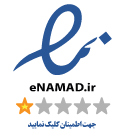توضیحات
ABSTRACT
Resource based theory (RBT), also known as the resource-based view, emphasizes resources as essential for building organizational competitive advantage. However, which competencies are essential for enhancing customer value remains unclear. Blueprinting and benchmarking are applied in this paper to demonstrate the process of identifying resources that are specific to co-creating customer value. This has important implications for the management of key marketing resources. Based on the case study results, application of the proposed methods suggests a new avenue for extending RBT application to the area of service management and in the development of service offerings.
INTRODUCTION
All indicators point to the fact that the pace of services and services innovation will continue to accelerate in the future (Spohrer & Maglio, 2008). Organizations often rely on services to improve customer value, and ultimately, organizational performance. However, organizations have also begun to realize that value creation occurs in interaction with customers (Grönroos, 2011; Ramaswamy, 2009) and that service is also offered through resources and capabilities, often intangible ones (Ramaswamy, 2009). There is a need to identify and continually develop those resources and capabilities that are essential for both the improvement of organizational performance and the creation of competitive advantage. Resource based theory (RBT) (Barney, 2014; Kozlenkova, Samaha, & Palmatier, 2014) or otherwise known as the resource based view (RBV) of the firm, posits that resources and capabilities are essential for creating competitive advantage and improving organizational performance(Barney, 1991; Hunt, 1997, 2011). Zubac, Hubbard, and Johnson (2010) develop a framework to show how managers can use a firm’s resources to create customer value. Several researchers examine the relationship between organizational performance and marketing resources and capabilities, such as market orientation (Narver & Slater, 1990) marketing planning capability (Slotegraaf & Dickson, 2004) and market knowledge competence (Li & Calantone, 1998). Different researchers identify different resources and capabilities as essential for organizational performance and competitive advantage. However, organizations are different from one another, and services they offer a unique nature and characteristics. Services are intangible, heterogeneous, inseparable and perishable (Johne & Storey, 1998). A method is required that can identify key resources and capabilities specific to an individual organization and its services. The RBV/RBT approach by itself cannot identify the specific resources and capabilities that lead to competitive advantage (Hinterhuber, 2013).
چکیده
نظریه مبتنی بر منابع (RBT)، همچنین به عنوان دیدگاه مبتنی بر منابع شناخته شده است، منابع را به عنوان ضروری برای ایجاد مزیت رقابتی سازمانی تأکید می کند. با این حال، چه صلاحیت هایی برای افزایش ارزش مشتری ضروری است؟ نقشه برداری و معیار سنجش در این مقاله برای نشان دادن روند شناسایی منابع خاصی که برای ایجاد ارزش مشترکی ایجاد می شود، استفاده می شود. این پیامدهای مهمی برای مدیریت منابع کلیدی بازاریابی دارد. بر اساس نتایج مطالعه موردی، کاربرد روش های پیشنهادی پیشنهاد می دهد راه جدیدی برای گسترش برنامه RBT به حوزه مدیریت خدمات و در توسعه خدمات ارائه شده است.
مقدمه
تمام شاخص ها به این واقعیت اشاره دارند که سرعت نوآوری خدمات و خدمات همچنان در آینده افزایش می یابد (Spohrer & Maglio، 2008). سازمانها اغلب در خدمات به منظور افزایش ارزش مشتری و در نهایت عملکرد سازمانی متکی هستند. با این حال، سازمان ها نیز متوجه شده اند که ایجاد ارزش در تعامل با مشتری ها اتفاق می افتد (Grönroos، 2011؛ Ramaswamy، 2009) و این سرویس نیز از طریق منابع و قابلیت ها، اغلب نامرئی است (Ramaswamy، 2009). نیاز به شناسایی و به طور مداوم توسعه منابع و قابلیت های لازم برای بهبود عملکرد سازمانی و ایجاد مزیت رقابتی ضروری است. نظریه مبتنی بر منابع (RBT) (بارنی، 2014؛ Kozlenkova، Samaha، و Palmatier، 2014) و یا به عنوان دیگری به عنوان منبع بر اساس (RBV) شرکت، شناخته شده است که منابع و قابلیت های ضروری برای ایجاد مزیت رقابتی و بهبود عملکرد سازمانی (بارنی، 1991؛ هانت، 1997، 2011). Zubac، Hubbard، and Johnson (2010) چارچوبی برای نشان دادن اینکه مدیران می توانند از منابع شرکت برای ایجاد ارزش مشتری استفاده کنند، توسعه می دهند. محققان چند رابطه بین عملکرد سازمانی و منابع بازاریابی و قابلیت های بازاریابی را بررسی می کنند، نظیر جهت گیری بازار (Narter & Slater، 1990)، قابلیت برنامه ریزی بازاریابی (Slotegraaf & Dickson، 2004) و مهارت های بازار (Li & Calantone، 1998). محققان مختلف منابع و توانایی های مختلف را برای عملکرد سازمانی و مزیت رقابتی ضروری می دانند. با این حال، سازمان ها از یکدیگر متمایز هستند و خدماتی که آنها طبیعت و ویژگی های منحصر به فرد ارائه می دهند. خدمات غیرمستقیم، ناهمگن، جدایی ناپذیر و فاسد می شوند (Johne & Storey، 1998). یک روش ضروری است که می تواند منابع کلیدی و قابلیت های خاص مربوط به یک سازمان فردی و خدمات آن را شناسایی کند. رویکرد RBV / RBT به خودی خود نمیتواند منابع و توانایی خاصی را که منجر به مزیت رقابتی می شود شناسایی کند (Hinterhuber، 2013).
Year: 2016
Publisher : ELSEVIER
By : Arnela Ceric , Steven D’Alessandro , Geoff Soutar , Lester Johnson
File Information: English Language/ 9 Page / size: 483 KB
Only site members can download free of charge after registering and adding to the cart
سال : 1395
ناشر : ELSEVIER
کاری از : آرنولا سریک، استیون دالساندرو، جف صوتار، لستر جانسون
اطلاعات فایل : زبان انگلیسی / 9 صفحه / حجم : KB 483


![Using blueprinting and benchmarking to identify marketing resources that help[taliem.ir]](https://taliem.ir/wp-content/uploads/Using-blueprinting-and-benchmarking-to-identify-marketing-resources-that-helptaliem.ir_.jpg)

![Competitiveness, Entrepreneurship[taliem.ir]](https://taliem.ir/wp-content/uploads/Competitiveness-Entrepreneurshiptaliem.ir_.jpg)
![The impact of supplychain management practices on competitive[taliem.ir]](https://taliem.ir/wp-content/uploads/The-impact-of-supplychain-management-practices-on-competitivetaliem.ir_.jpg)
![Towards Extracting Customer Needs from Incident[taliem.ir]](https://taliem.ir/wp-content/uploads/Towards-Extracting-Customer-Needs-from-Incidenttaliem.ir_.jpg)

![Knowledge management vs. data mining Research trend, forecast and[taliem.ir]](https://taliem.ir/wp-content/uploads/Knowledge-management-vs.-data-mining-Research-trend-forecast-andtaliem.ir_-150x150.jpg)

نقد و بررسیها
هنوز بررسیای ثبت نشده است.